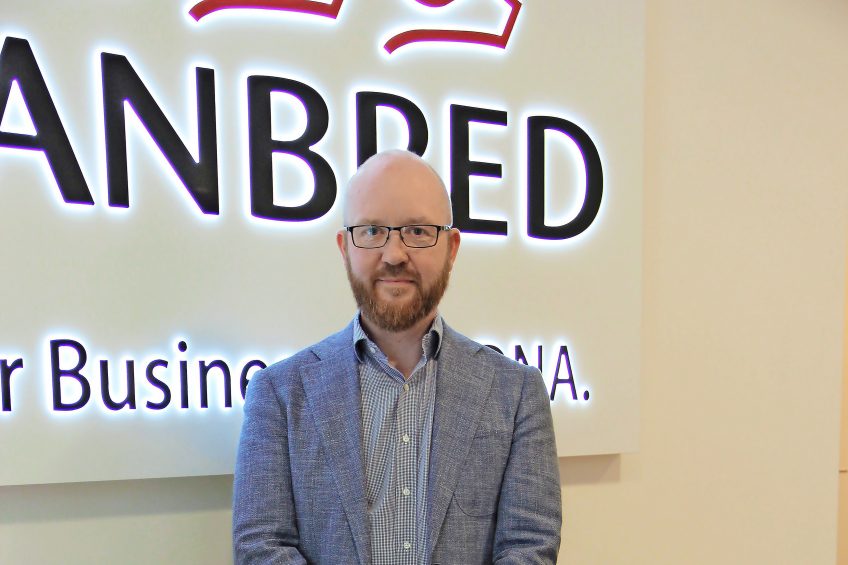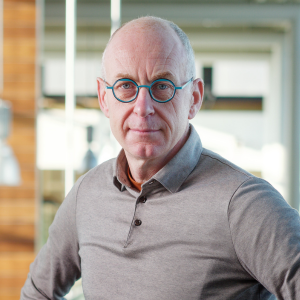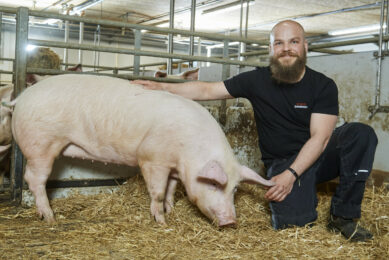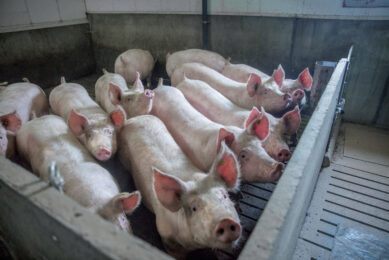DanBred CEO: “Pig farms grow and so will we”

In terms of organisation, the Danish pig breeding sector is reinventing itself. Thomas Muurmann Henriksen is CEO of DanBred. He says, “We simply don’t have another choice. We have to reorganise ourselves.”
The reorganisation of the Danish swine breeding organisation DanBred has formally been finalised. Nevertheless, the Danish still have a lot of work ahead of them before the ultimate goal will be reached: a versatile sales and advisory organisation that will be globally visible. Because of the reorganisation, however, the breeding company had to start at square one again. Their main office is in Herlev, a stone’s throw from the Danish capital Copenhagen.
|
Pig Progress: What is the status of the reorganisation at the moment?
Thomas Muurmann Henriksen: “Most things will be arranged in the course of 2018. The Netherlands, Germany, France and Spain are among our most important European markets. In total we are active in about 40 countries worldwide. This is why it takes time to go through a process of reorganisation and do it well all over the world. In France, by the way, the new organisation is already completed.”
A reorganisation – what’s in it for pig producers?
“These days, pig farmers expect more than just a supply of genetics. They require the highest possible profit from their pigs. To make the most of their swine, it is necessary that they get proper advice as well as coaching from us. In the old situation, our sales organisation was way too fragmented to offer advice and coaching. A substantial amount of the smaller agents and traders, which previously sold our sows, simply did not have the resources to supply advice to the end-users.
Pig farms are growing and that’s what we are supposed to do as well. Competitors, like PIC, Topigs Norsvin or Genesus, have a comparable organisational structure to the one we are currently developing. I project that, just like in the poultry business, in the future only a handful of breeding organisations will remain active in the swine business. To be among them means that we don’t have any other choice than to reorganise. Otherwise we will not stay in business.”
What will customers notice all over the world?
“An increased service level as well as coaching. Those plans are only in the early stages at the moment. We cannot make generalised advice for all customers across the globe. For instance, in Denmark or the Netherlands, the pig business is organised in a completely different way than in e.g. Asia. In addition, the level of knowledge is different from country to country. Hence, we have to create targeted services. At EuroTier in November this year, we will launch a digital education and instruction tool for customers. It is currently being tested in Denmark. This tool will be available in at least 3 languages.”
Is the DanBred sow that difficult to manage?
“No, that’s not the case. With additional service and coaching we simply would like to demonstrate our commitment to customers. At the most important international markets, we would simply like to be strongly present and highly visible. Just like our competitors.”
The ever-growing litter size of sows, however, does increasingly require a lot of stockmanship, doesn’t it?
“I don’t think so. We have been breeding for pig vitality for over 10 years – and that will continue to be an important characteristic. From 2015 to 2018, this aspect counts for 28% in our sow lines; on top of that, vitality is the most important breeding goal after feed conversion. We work with the so-called LP5 number; the number of liveborn pigs 5 days after birth. This key figure shows to what extent a sow is capable of getting her piglets going and to what extent the piglets can survive with their mothers. The number of liveborn piglets at day 5 also has a very good predictive value for the total amount of weaned piglets per sow. In addition, it is also an honest number, as it largely excludes environmental factors, like e.g. hygiene and barn climate. After all, we will count the piglets at day 5 after parturition.
We will continue to breed for litter size. That is for economic reasons. A sow is at the heart of the investment at multiplication farms, and the money comes from the sale of piglets. It is that simple. In e.g. the Netherlands or Denmark, production costs are higher than in Eastern Europe, Asia or Latin America. For our customers in North Western Europe, it is therefore crucial that they can work with sows that can deliver a top result, and that those customers also know how to fully benefit from their sows’ potential. Pig farmers in the Netherlands and Denmark prove that they can achieve large productivity with our sows. That is what is needed. Otherwise they do not have any economic perspective in the global pig market.”
Reorganisation in Denmark
The reorganisation in the Danish swine breeding business led to a partition. Until last year, the Danish genetics were uniquely sold under the name DanAvl. Now, however, there are 3 organisations selling Danish pig genetics. One of them being DanBred, which is the continuation of the DanAvl programme. In addition, there are 2 new names – Danish Genetics as well as Danic.
The 2 new companies – and their customers – did not agree with new conditions launched at DanBred. As a result, about 30% of the original breeding farms are no longer connected to DanBred (previously DanAvl), Mr Muurman Henriksen confirms.
To what extent has this partition influenced genetic progress?
“I cannot deny that something like this created a temporary vacuum in pig breeding. Nevertheless, our breeding population is now back at pre-partition levels. We have also contracted a few new breeding companies and existing breeders have more sows. So, the breeding machine is in full swing again. We are now working with a total of 23 nucleus farms, all placed in Denmark. For nucleus breeding we have 2,200 sows in both Landrace and Yorkshire and 1,800 Duroc sows for the terminal sire side. All in all, around the globe including Denmark we have 76,000 purebred sows in nucleus and multiplication herds. There are 114 contracted multiplication herds around the globe, of which 60 are located in Denmark. Still, we are constantly looking for new multiplication farms. Otherwise our company cannot grow.”
What is your revenue expectation for 2018?
“We‘ll reach about 1 million sows because of additional breeding activities on sow farms. We also expect to sell about 750,000 breeding sows, both F1 animals as well as pure line sows.”
What will happen with breeding data after the partition?
“Data will stay with us. We are the continuation of the Danish pig breeding programme. In case breeders choose to go a different way, the consequence of that is that they will no longer have access to those data. It’s as simple as that.”
And what if a judge would rule differently?
“This is my opinion. If the matter would have to be settled in court, then we’ll see what a judge will say. I think things are pretty straightforward – data will stay with us and will not go anywhere else.”
DanBred now owned by 3 playersDanBred is now owned by 3 different players in the Danish market. Of the shares, 24.5% is owned by agricultural cooperative Danish Agro. This cooperative also owns artificial insemination company Hatting-KS. Another 24.5% of the shares is owned by DanBred International, the combination of all Danish nucleus and multiplication farms. The majority is owned by SEGES (51%), which is the research division of Danish Agriculture & Food Council (Landbrug & Fødevarer). SEGES’ management is made up of pig producers – so this way they can decide about DanBred’s pig breeding programme. |


 PROFILE
PROFILE








